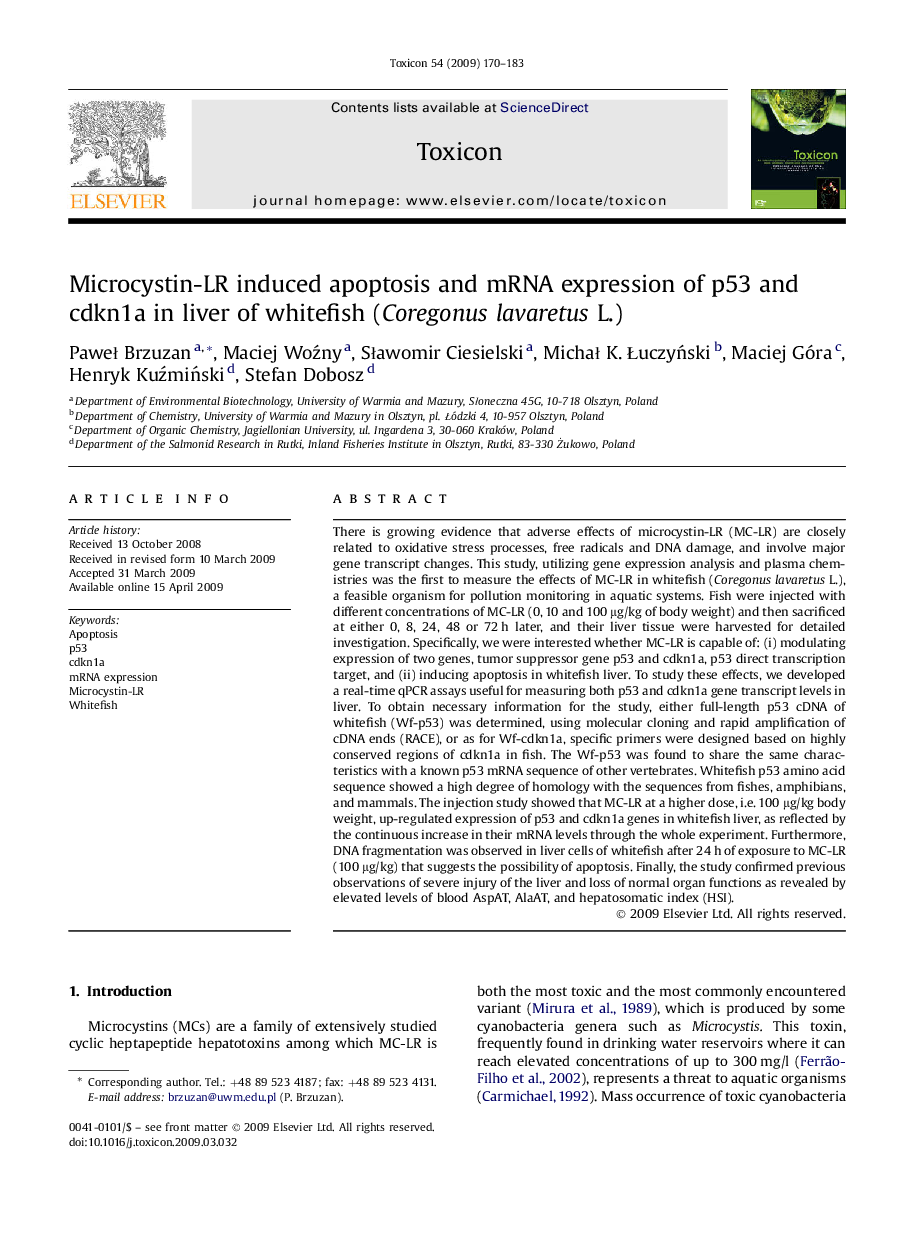| Article ID | Journal | Published Year | Pages | File Type |
|---|---|---|---|---|
| 2065685 | Toxicon | 2009 | 14 Pages |
There is growing evidence that adverse effects of microcystin-LR (MC-LR) are closely related to oxidative stress processes, free radicals and DNA damage, and involve major gene transcript changes. This study, utilizing gene expression analysis and plasma chemistries was the first to measure the effects of MC-LR in whitefish (Coregonus lavaretus L.), a feasible organism for pollution monitoring in aquatic systems. Fish were injected with different concentrations of MC-LR (0, 10 and 100 μg/kg of body weight) and then sacrificed at either 0, 8, 24, 48 or 72 h later, and their liver tissue were harvested for detailed investigation. Specifically, we were interested whether MC-LR is capable of: (i) modulating expression of two genes, tumor suppressor gene p53 and cdkn1a, p53 direct transcription target, and (ii) inducing apoptosis in whitefish liver. To study these effects, we developed a real-time qPCR assays useful for measuring both p53 and cdkn1a gene transcript levels in liver. To obtain necessary information for the study, either full-length p53 cDNA of whitefish (Wf-p53) was determined, using molecular cloning and rapid amplification of cDNA ends (RACE), or as for Wf-cdkn1a, specific primers were designed based on highly conserved regions of cdkn1a in fish. The Wf-p53 was found to share the same characteristics with a known p53 mRNA sequence of other vertebrates. Whitefish p53 amino acid sequence showed a high degree of homology with the sequences from fishes, amphibians, and mammals. The injection study showed that MC-LR at a higher dose, i.e. 100 μg/kg body weight, up-regulated expression of p53 and cdkn1a genes in whitefish liver, as reflected by the continuous increase in their mRNA levels through the whole experiment. Furthermore, DNA fragmentation was observed in liver cells of whitefish after 24 h of exposure to MC-LR (100 μg/kg) that suggests the possibility of apoptosis. Finally, the study confirmed previous observations of severe injury of the liver and loss of normal organ functions as revealed by elevated levels of blood AspAT, AlaAT, and hepatosomatic index (HSI).
